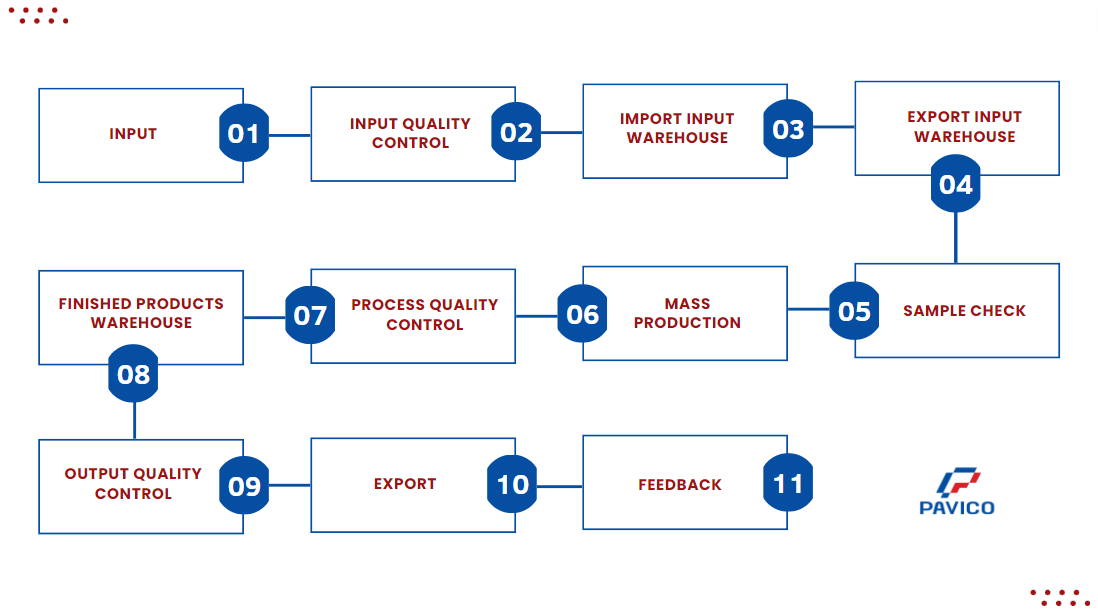Plastic bottles are increasingly being used in various manufacturing industries in general and the pharmaceutical industry in particular. Just like many other industries, the pharmaceutical industry needs to pay special attention to hygiene and safety issues to ensure the quality of the medication inside while maintaining the aesthetic appeal of the packaging. To produce pharmaceutical bottles, we need to consider issues such as the type of plastic, quality standards, protective features, and learn about some important considerations in pharmaceutical bottle production through the article below.
1. Some issues to consider in pharmaceutical packaging production
Plastic bottles are widely used in pharmaceutical packaging production. Here are some things to know about plastic bottles in pharmaceutical packaging production:
Types of plastics used: Plastic bottles are produced from various types of plastics such as PET, PP, PE, PVC, etc. Depending on the product requirements, the appropriate type of plastic will be used to manufacture the bottles.
- Quality standards: The production of plastic bottles for pharmaceutical packaging must meet strict quality standards, including transparency, durability, elasticity, hardness, thickness, and waterproofing ability.
- Quality control: The process of producing plastic bottles in pharmaceutical packaging must be closely monitored to ensure product quality. Quality control parameters include temperature and pressure during production, transparency, thickness, and waterproofing ability of the bottles.
- Hygiene and safety: Pharmaceutical bottle manufacturing facilities must ensure food hygiene and safety. Requirements include clean rooms, isolation, and ensuring that the production process is carried out in a safe environment.
- Customization of sizes: Plastic bottles can be manufactured in various sizes to meet the product’s needs. These sizes include the diameter and height of the bottles, as well as the type of caps and bottle openings.
- Protective features: Plastic bottles are also designed to protect the product from external factors such as light, moisture, and oxidation. This feature is particularly important in pharmaceutical packaging, where the product must be protected from factors that could be harmful to human health.

2. Some types of plastics used in pharmaceutical packaging production and their advantages
There are several types of plastics used in pharmaceutical packaging production, depending on the product’s requirements and regulatory requirements. Here are some common types of plastics and their advantages:
- Polyethylene (PE): PE is a flexible and durable plastic, often used for liquid and powder packaging products. PE is waterproof, resistant to permeation, and UV-resistant.
- Polypropylene (PP): PP is a widely used plastic in the packaging industry, known for its waterproof, permeation resistance, and good load-bearing capacity. PP is used for packaging products such as bags, boxes, bottles, and jars.
- Polyvinyl chloride (PVC): PVC is a soft and flexible plastic with resistance to high temperatures and waterproofing capabilities. PVC is used for packaging products like bags, bottles, jars, and boxes.
- Polycarbonate (PC): PC is a highly durable plastic with good impact resistance and heat resistance, making it suitable for packaging bottles and jars.
- Polyethylene terephthalate (PET): PET is a hard and transparent plastic with good heat resistance and impact resistance. PET is used for packaging bottles, jars, and boxes.

Depending on the intended use and product requirements, these plastic types have their own advantages, such as high durability, flexibility, load-bearing capacity, waterproofing, and permeation resistance. Choosing the appropriate plastic type will help protect the product better and ensure the quality of pharmaceutical products.
3. Protective features of plastic packaging for pharmaceuticals

Plastic packaging for pharmaceuticals has protective features to safeguard the pharmaceutical products from external factors such as light, moisture, dust, bacteria, oxidation, and the effects of various environmental factors. The protective features of plastic packaging for pharmaceuticals include:
- Moisture resistance: Plastic pharmaceutical packaging has moisture-resistant properties to prevent the product from absorbing moisture or becoming wet during storage and transportation.
- Oxidation resistance: Plastic pharmaceutical packaging has oxidation resistance, protecting pharmaceutical products from the oxidation process and ensuring product quality.
- UV protection: Plastic pharmaceutical packaging has UV protection capabilities, safeguarding pharmaceutical products from the effects of sunlight and ensuring product stability.
- Sealing properties: Plastic pharmaceutical packaging has a high degree of sealing, preventing the infiltration of bacteria and external agents into the product.
- Temperature resistance: Plastic pharmaceutical packaging has temperature resistance, protecting pharmaceutical products from temperature fluctuations during transportation and storage.
In summary, the protective features of plastic packaging for pharmaceuticals are essential to ensure the quality and safety of pharmaceutical products during storage and transportation.
– For more information and consultation, please contact:
Hotline: 0862772776
Website: pavicovietnam.com
Email: marketing@pavicovietnam.vn
– See more plastic products at: https://pavicovietnam.com
Office: No. 4 Lot TT03, Lane 2 Ham Nghi, My Dinh Ward, Nam Tu Liem District, Hanoi
Factory: Lot E1, Trung Ha Industrial Park, Dan Quyen, Tam Nong, Phu Tho







